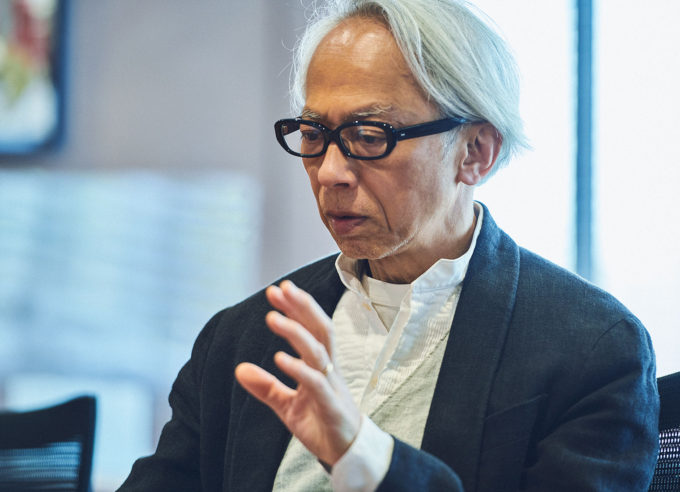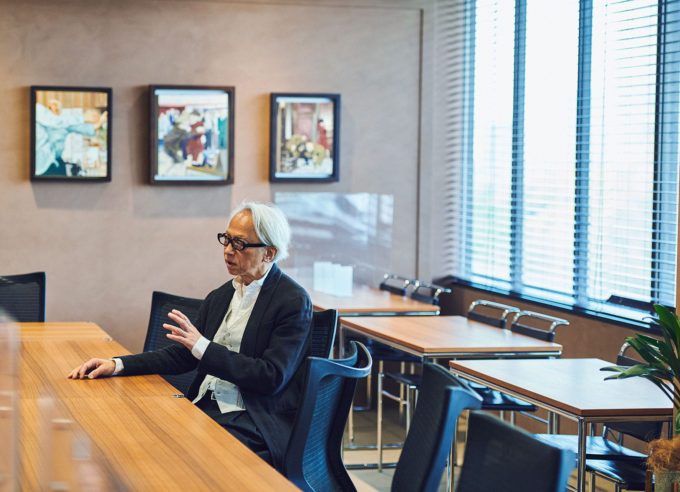“Just yesterday, an advertisement for SOLOTEX® was carried in Senken Shinbun (a daily Japanese fashion newspaper). Seeing that, I once again realize that it is an age when not only a product but also its material can be part of added value that appeals to customers”, said Mr. Kurino as he opened his mouth. Mr. Kurino is a founding member of one of Japan’s most renowned select shops and is a senior advisor of the company now. We had an interview with him to hear his valuable ideas about fashion, materials and times.

Mr. Kurino, you have kept an eye on the fashion scene in Japan from the dawn to the present days. Today, we would be happy if we could hear about the history of materials and fashion, as well as the importance of materials that could be seen through that.
Then, the history I should talk about started even earlier than my own career. For example, nylon and polyester were invented between 1930s and 1940s, and the impact they had on fashion was immeasurable. The invention was just revolutionary. Nylon is a material by which ladder-proof stockings were realized, and so there is even an urban legend that the term “NY+LON” was coined with an awareness of New York and London, the cities as a source of the latest technologies and fashion of the time.
Actually, nylon and polyether significantly revolutionized a wide range of clothing.
Tracing back the history, the mainstream of fashion was represented by haute couture and tailor-made, and many were one-of-a-kind clothes. So only wealthy people can enjoy fashion. However, after nylon and polyether were invented and mass production techniques were developed, many people became able to enjoy fashion. Along with the modernization of our lives, women came to work outside and seek for easy-care clothing in order to reduce time for housework, which promoted change and evolution of clothing.
After the world war ended and the era of peace started, the notion of leisure came out and people increasingly came to enjoy sports and leisure activities. Maybe based on such a historical backdrop, 60/40 cloth, which was a blend of cotton and polyester, and functional textiles such as GORE-TEX were developed and relied on.

You mean that new materials were born as technology advanced, followed by the evolution of fashion.
As a matter of course, fashion has evolved through design. Maybe it was remarkable in the latter half of 1970s and 1980s, symbolized by Yves Saint Laurent and Giorgio Armani in 1970s and COMME des GARCONS, Yohji Yamamoto and Issey Miyake in 1980s.
Since the latter half of the 20th century, Japanese brands have been committed to functionality successfully. For example, Yoji Yamamoto put it into practice through Y-3 in collaboration with Adidas, and Issey Miyake integrated design with functionality under the concept of PLEATS PLEASE. COMME des GARCONS and Jun Watanabe have actively used newly developed materials. In short, materials give new potential to clothing, and designers brush it up through the potential of design. I think the interaction between fashion and materials is very interesting and exciting.
Updated information is available via the solotex official account.
Hirofumi KurinoHirofumi Kurino
Entered SUZUYA.CO.LTD. at the time of graduation from university in 1977.
Joined BEAMS Co., Ltd. in 1978, and held the positions as the managers of major shops, buyer, director, press agent and planning manager, followed by the establishment of UNITED ALLOWS LTD. in 1989.
Recognized as an Honorable Fellow from Royal College of Art in 2004.
Currently assumes the position of Senior Advisor for Creative Direction at UNITED ARROWS LTD.



